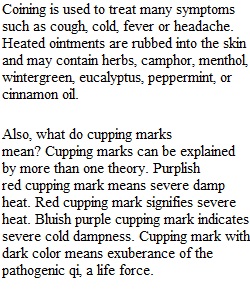


Q Case Study 1: Please read the case study in Chapter 4 (pgs. 89-90). The first sentence of the case study is an intriguing one, "Some cultural practices used to treat illness produce marks on the body that can mimic abuse." Please answer the following questions and respond to two other peers' posts. Review the case study rubric in your syllabus for details. 1. What is the difference between coining and cupping? 2. Are coining and cupping child abuse? Explain your rationale. 3. When do cultural practices cross over to being abuse? Explain your rationale.
View Related Questions